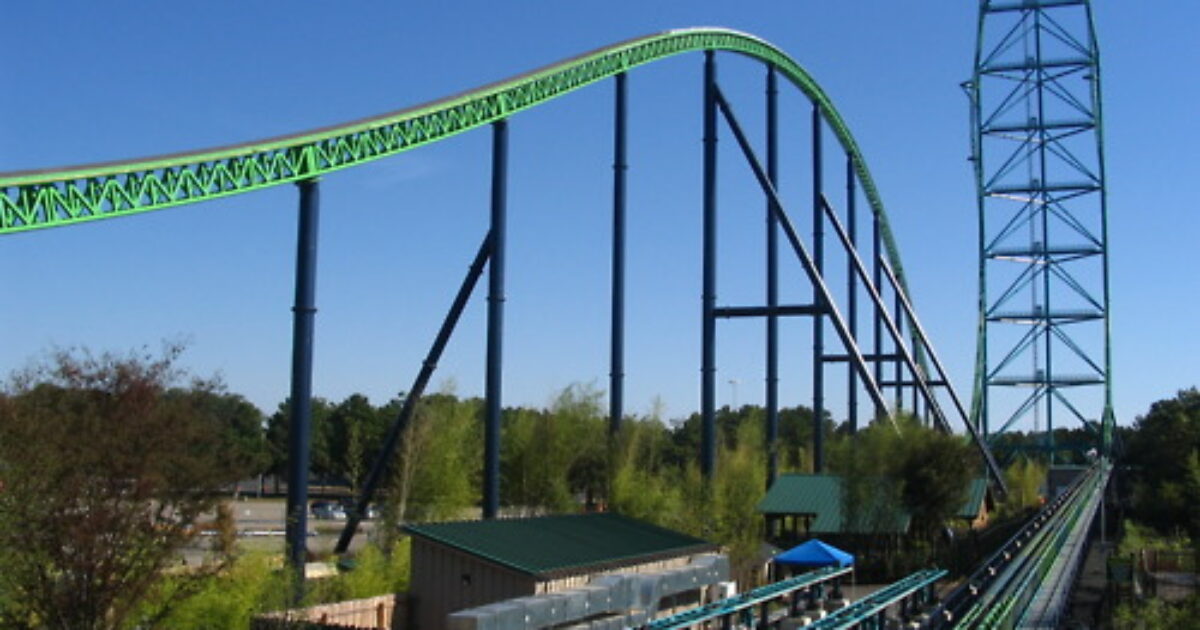In the last edition of Coasters-101 we discussed how roller coasters are raised to their highest point via lift hills. Today we’re going to examine a more thrilling alternative to the traditionally slower lift hills: launch systems! Limitations like height...
Continue reading...Coasters-101
Coasters-101: Roller Coaster Lift Hills – UPDATED 2022
Welcome to the latest edition of Coasters-101: the definitive guide on roller coaster lift hills. What are lift hills? How do roller coasters reach their highest point? How do lift hills work? What angle are roller coaster lift hills? What...
Continue reading...Coasters-101: Vertical Loops – UPDATED 2022
Welcome to another edition of Coasters-101, the series where we teach you all about roller coaster design. There is something quite remarkable about being able to defy gravity and part of the charm of roller coasters is that they let...
Continue reading...Roller Coaster Design Trends and Technology
A reader recently asked me for my thoughts on how roller coaster design is changing. Specifically, he wanted to learn more about growing trends and new technology. I decided I would share my response with the rest of you and...
Continue reading...Coasters-101: How does a 4D coaster work?
In this edition of Coasters-101 we’ll answer the question: how does a 4D coaster work. A new 4th dimension roller coaster from S&S Worldwide, called Dinoconda, is opening this year at China Dinosaurs Park in Changzhou, Jiangsu, China. This is only...
Continue reading...Coasters-101: Brakes, Blocks, and Sensors
How do you keep multiple trains on a roller coaster from running into each other? In order to have the highest throughput possible, most modern roller coasters operate more than one train at a time. In order to run multiple...
Continue reading...Coasters-101: Track Fabrication
Welcome to the latest edition of Coasters-101 where we’ll answer the question how is roller coaster track made and explain what some of the latest track fabrication techniques. Tubular roller coaster track is typically formed by heating and then permanently...
Continue reading...Coasters-101: Roller Coaster Wheel Design
Welcome to Coasters-101: Roller Coaster Wheel Design! A typical wheel used on a roller coaster is constructed by taking an aluminum hub and bonding a polyurethane tire to the hub’s outside diameter. This entire “wheel assembly” is then connected to...
Continue reading...Coasters-101: Foundations
Welcome to another addition of Coasters-101. Today we’re going to discuss one of the most important and perhaps most overlooked components of a roller coaster-the foundations! It’s an exciting time when you go to your nearest amusement park and see...
Continue reading...Coasters-101: Track Modeling in CAD
Welcome to the latest edition of Coasters-101, the series where we talk about how roller coasters are designed and built. Let’s talk about modeling a roller coaster track on the computer. There are many different 2D and 3D CAD packages...
Continue reading...Coasters-101: Safety Standards
Welcome to another edition of Coasters-101. Today we are going to discuss amusement industry safety standards. Amusement parks entertain millions of visitors every year, giving countless numbers of safe rides. You’re much more likely to get hurt on your way...
Continue reading...Cantilevered Coaster Model Update
Check out the latest video of the cantilevered roller coaster concept model. I completed some of the fine details for the main layout including the cross-ties, support columns, and cement footers. I also attempted to add a banked track section...
Continue reading...





















Recent Discussion